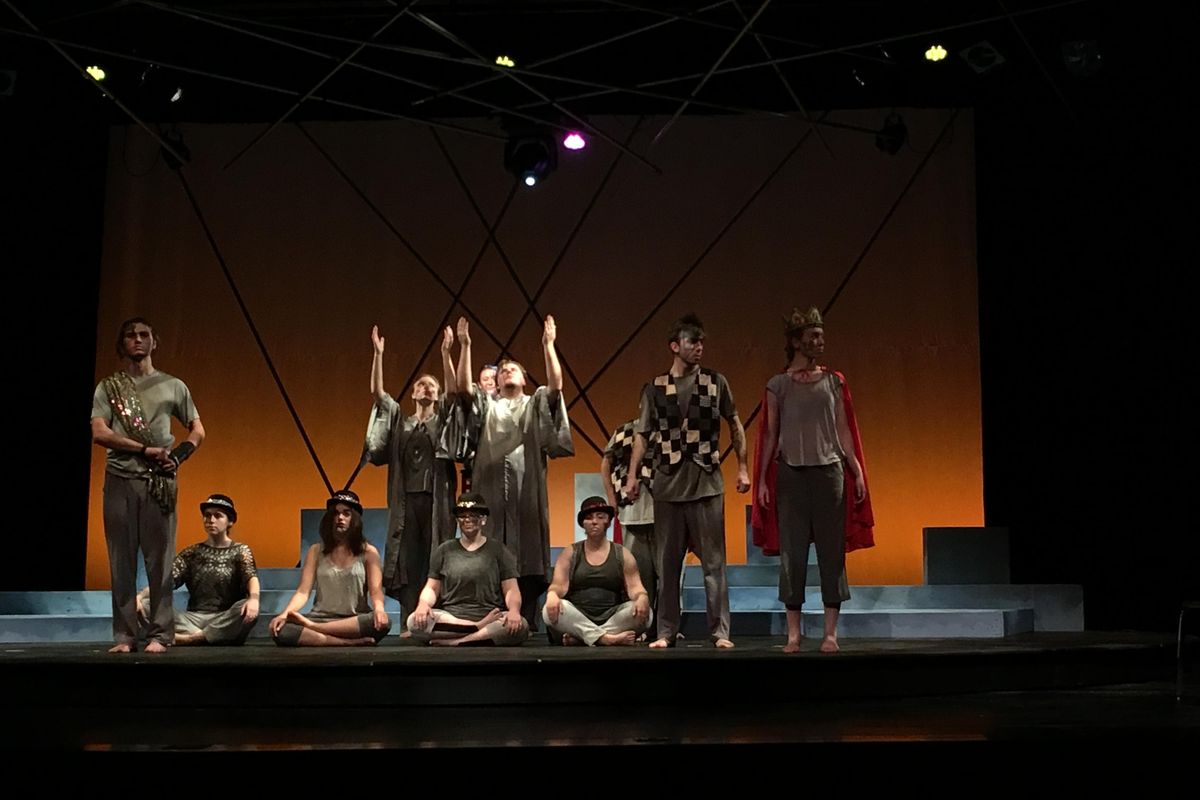NIC theater students going outside the ordinary

Undergraduate theater students of North Idaho College are taking a wild trip into minimalism and the dramatic absurd this weekend with performances of David Ives’ “Philip Glass Buys a Loaf of Bread” and NIC music instructor Gerard Mathes’ “SYM” at Schuler Performing Arts Center.
Both pieces, as one might imagine from reading the titles, are fairly out of the ordinary.
In “Philip Glass Buys a Loaf of Bread,” four speakers “are trying to imitate the sort of rhythmic minimalism of a Philip Glass piece,” Mathes said. “There are references in their statements to ‘Einstein on the Beach,’ sometimes to other pieces that he’s done. All it is is a sort of vignette where Philip Glass comes up to a baker, observed by two women, and (tries) to buy a loaf of bread.”
Philip Glass is an Academy Award-nominated composer (“Kundun,” “The Hours,” and “Notes on a Scandal”), known for his minimalist, repetitive and often rule-breaking style. The Ives piece parodies some of Glass’ more eccentric work. This may leave viewers that haven’t experienced works such as Glass’ “Einstein on the Beach,” a 5-hour minimalist opera without intermission, in the dark with respect to the specific references.
It makes for a niche joke, “but hopefully the lightness of it will communicate,” said NIC theater instructor Joe Jacoby. “It moves pretty quickly, and I think people will be able to enjoy it in a lighthearted sort of way whether they get it completely or not.”
At the very least, the 5-8 minute curtain opener will put viewers in the right state of mind for Mathes’ much longer dramatic dance and spoken word piece that also experiments with elements of Glass’ technique, only without the parody.
In “SYM,” Mathes adopts the structure of a symphony to organize a series of concepts and questions through layers of dance, music and text.
As in a symphony, “SYM” is broken down into movements or defined sections that all express their own musical ideas. The first movement is concerned with creation, the second with mathematics and enormity, the third with quantum theories and the fourth with existence. Throughout this “dramatic dance symphony” Mathes works with a variety of musical styles, languages and choreographic representations to express the underlying questions suggested in the text of each movement.
It’s hard to fully illustrate just how much is going on in this piece and, therefore, even harder to define it by a single artistic category.
“It’s not plot driven, it’s not a musical, not quite an opera, it’s not just a symphony and it’s not really just a dance show but it takes elements of all of those things and finds a way to make a dramatic performance that marries all of that,” Jacoby said. “If we’ve done our job.”